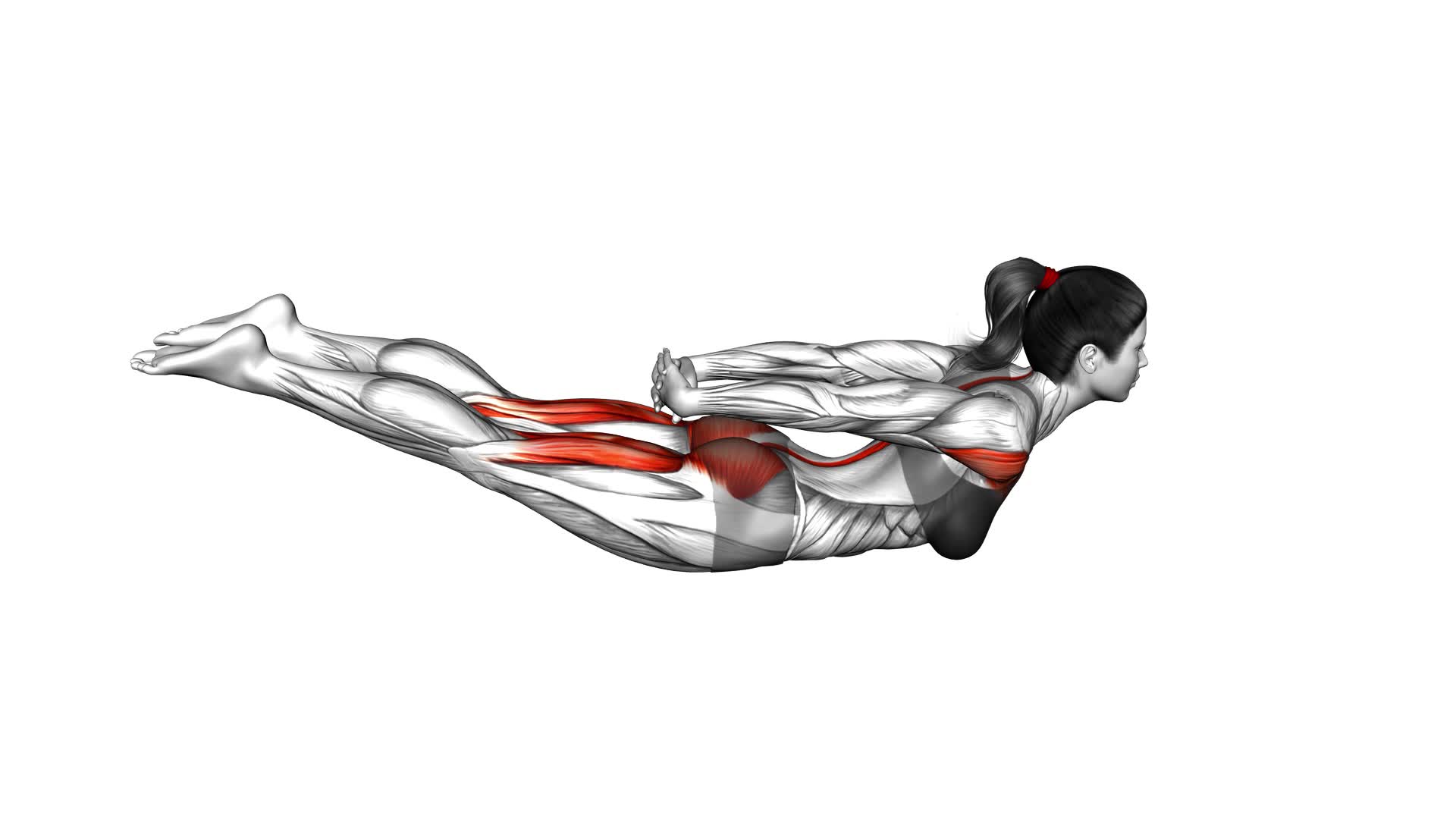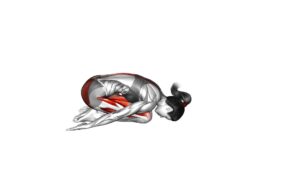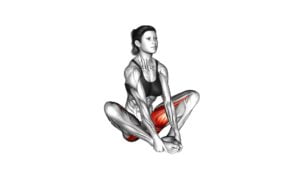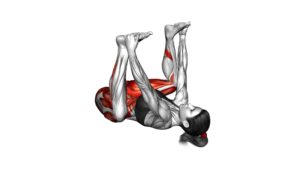Locust Pose (female) – Video Exercise Guide & Tips

Get ready to strengthen your body and improve your fitness with Locust Pose.
Watch This Exercise Video
This video exercise guide and tips will help you achieve proper alignment and technique, while avoiding common mistakes.
Whether you're a beginner or advanced, modifications and variations cater to all fitness levels.
With expert advice and precautions, you'll progress safely and effectively.
Don't miss out on the benefits of Locust Pose – watch the video and start transforming your body today.
Key Takeaways
- Locust Pose strengthens and tones the entire body.
- It improves overall posture and alignment.
- The pose increases flexibility in the spine.
- Locust Pose stimulates the abdominal organs and can help alleviate back pain.
Benefits of Locust Pose for Women
Discover the empowering benefits of the Locust Pose for women as it strengthens and tones your entire body. This pose not only has physical benefits, but it also has positive effects on your mental health. By practicing the Locust Pose regularly, you can improve your overall posture and alignment.
One of the mental health benefits of the Locust Pose is its ability to reduce stress and anxiety. As you engage your muscles and focus on your breath, you cultivate a sense of calm and relaxation. This can help to alleviate any mental tension or worries that you may be experiencing. Additionally, the Locust Pose can help to improve your self-confidence and boost your mood. As you feel your body becoming stronger and more toned, you may also notice an increase in your overall sense of well-being.
In addition to its mental health benefits, the Locust Pose is also effective in improving your posture. By strengthening the muscles in your back and shoulders, this pose can help to correct any imbalances or weaknesses that may be causing poor posture. As you practice the Locust Pose, you'll develop a stronger and more aligned spine, resulting in a more upright and confident posture.
Now that you understand the mental health and posture benefits of the Locust Pose, let's dive into the proper alignment and technique for this empowering pose.
Proper Alignment and Technique for Locust Pose
To achieve proper alignment and technique for Locust Pose, position yourself on your mat with your body facing downward. Start by lying flat on your belly, with your arms extended alongside your body, palms facing down. Engage your core muscles and press your pubic bone into the mat. This will help to lengthen your lower back and protect it during the pose.
One common misconception about Locust Pose is that you need to lift your legs and torso as high as possible. However, the key is to focus on the quality of the movement rather than the height. Lift your legs and upper body off the mat simultaneously, keeping your gaze forward and your neck in a neutral position. Avoid straining your neck or compressing your lower back.
As you lift, remember to breathe deeply and evenly. Inhale as you prepare, and exhale as you lift. This will help you maintain control and stability throughout the pose. If you find it challenging to lift both your legs and upper body, you can start by lifting one leg at a time or using a prop such as a folded blanket under your hips for support.
Modifications and Variations for Different Fitness Levels
Now let's talk about the modifications and variations you can incorporate into your Locust Pose practice to accommodate different fitness levels.
For beginners, you can start by lifting one leg at a time instead of both simultaneously, and gradually work your way up to lifting both legs.
To challenge yourself as an advanced practitioner, you can add ankle weights or try lifting your arms and legs higher off the ground.
Adaptations for Beginners
Start by modifying and varying the Locust Pose to suit your fitness level. This pose is a great way to build core strength and improve overall body stability.
Here are three adaptations for beginners:
- Start with a modified version: Lie on your stomach with your arms extended in front of you. Lift only your chest and head off the ground, keeping your legs relaxed. This variation reduces the intensity and allows you to focus on engaging your core muscles.
- Use props for support: If you struggle to lift your legs off the ground, place a folded blanket or bolster under your hips for support. This will help you maintain proper alignment and gradually build strength in your lower back and glutes.
- Take breaks as needed: Don't push yourself too hard in the beginning. Take breaks whenever necessary and listen to your body. Over time, you can gradually increase the duration and intensity of the pose.
Challenges for Advanced Practitioners
As you progress in your practice, you can further challenge yourself in the Locust Pose by exploring modifications and variations to accommodate different fitness levels.
For advanced practitioners, there are advanced modifications and variations that can take the pose to a whole new level. One advanced modification you can try is lifting both your arms and legs simultaneously, instead of one at a time. This requires more strength and balance.
Another advanced variation is extending your arms and legs wider apart, increasing the challenge for your core and back muscles.
Additionally, you can experiment with holding the pose for longer durations, gradually building up your endurance.
Remember to always listen to your body and only attempt these advanced modifications and variations when you feel ready.
Common Mistakes to Avoid in Locust Pose
Ensure proper form in Locust Pose by avoiding these common mistakes:
- Collapsing the chest: One of the most common mistakes in Locust Pose is allowing the chest to collapse towards the ground. To avoid this, engage your core muscles and lift your chest up, keeping it open and expanded. This will help you maintain proper alignment and maximize the benefits of the pose.
- Overarching the neck: Another mistake to avoid is overarching the neck, which can strain the cervical spine. Instead, lengthen the back of your neck and keep it in line with your spine. Imagine a straight line extending from the crown of your head all the way down to your tailbone.
- Neglecting the legs: Many people tend to focus solely on the upper body in Locust Pose, neglecting the strength and engagement of the legs. To build strength in your legs, actively press your thighs and knees down into the mat, while lifting your chest and arms. This balanced engagement will help you achieve a more stable and aligned pose.
Tips for Building Strength and Progressing in Locust Pose
To continue developing your strength and advancing in Locust Pose, focus on incorporating progressive variations and challenging your muscles in new ways. Building endurance is key to progressing in this pose. One way to do this is by holding the pose for longer periods of time, gradually increasing the duration as your strength improves. Another way to build endurance is by performing multiple repetitions of the pose, with short breaks in between.
In addition to building endurance, you can also explore advanced variations of Locust Pose to further challenge your muscles. One such variation is the Superman Pose, where you extend your arms forward alongside your head and lift both your upper body and legs off the ground simultaneously. This variation targets the entire back and requires a strong core.
As you continue to practice and incorporate these tips, you'll gradually build strength and improve your ability to hold Locust Pose for longer periods of time. Remember to listen to your body and only progress to advanced variations when you feel ready and strong enough to do so.
Now that you have learned about building strength and progressing in Locust Pose, let's move on to the next section, where we'll discuss precautions and contraindications for this pose.
Precautions and Contraindications for Locust Pose
Before attempting Locust Pose, be aware of the precautions and contraindications associated with this exercise. While Locust Pose can be beneficial for strengthening the core and relieving back pain, it's important to proceed with caution. Here are three important things to consider:
- Injury or Recent Surgery: If you have a recent injury or have undergone surgery, especially in the back, neck, or shoulders, it's best to avoid practicing Locust Pose. This pose puts pressure on these areas and can potentially worsen your condition or impede the healing process.
- Pregnancy: Pregnant women should avoid Locust Pose, as it involves lying on the stomach and can put pressure on the abdomen. It's important to prioritize the safety and comfort of both mother and baby during yoga practice.
- Herniated Disc or Osteoporosis: If you have a herniated disc or osteoporosis, Locust Pose may not be suitable for you. This pose involves lifting the legs and chest off the ground, which can put strain on the spine. It's important to consult with a healthcare professional or a qualified yoga instructor before attempting this pose.
Frequently Asked Questions
Can Men Also Practice Locust Pose?
Yes, men can also practice locust pose. This pose has modified variations for men that can be beneficial.
However, it's important for all practitioners to be mindful of common mistakes to avoid in locust pose. Maintaining proper alignment and engaging the core muscles are key. Remember to breathe deeply and listen to your body's limits.
With practice and proper guidance, both men and women can enjoy the benefits of locust pose.
Are There Any Specific Benefits of Locust Pose for Pregnant Women?
During pregnancy, practicing locust pose can have specific benefits for you. This pose strengthens your back muscles, which can help alleviate back pain and improve posture.
It also helps to open up the chest and shoulders, allowing for better breathing and increased circulation.
To modify the pose for pregnancy, you can use a prop like a bolster or blanket to support your belly and avoid putting pressure on it.
Always consult with your doctor before starting any new exercise routine during pregnancy.
Can Locust Pose Help With Menstrual Cramps?
Locust pose, also known as Salabhasana, is a yoga posture that can potentially help with menstrual cramps. By engaging and stretching your lower abdomen and pelvic area, locust pose may help to alleviate the discomfort associated with menstrual cramps.
Additionally, practicing this pose regularly can provide various benefits, such as strengthening your back, toning your glutes, and improving digestion.
There are also different variations of locust pose that can be modified to suit your individual needs and abilities.
How Long Should One Hold Locust Pose for Maximum Benefit?
For maximum benefit, the ideal duration to hold Locust Pose varies based on your level of strength and flexibility. As a general guideline, aim to hold the pose for about 30 seconds to 1 minute. This will help engage and strengthen your back muscles effectively.
However, if you're a beginner or have limited flexibility, you can start with shorter durations and gradually increase it over time. Remember to listen to your body and avoid any discomfort or pain.
Can Practicing Locust Pose Help Improve Posture?
Practicing locust pose can certainly help improve your posture. By engaging your back muscles and lengthening your spine, this pose can correct rounded shoulders and slouching.
The benefits of locust pose extend beyond posture improvement. It strengthens your core, glutes, and legs, and increases flexibility in your chest and shoulders.
Additionally, there are variations of locust pose that you can explore to target specific areas and intensify the benefits.
Conclusion
In conclusion, the locust pose is a beneficial exercise for women, providing a range of physical and mental benefits.
By practicing proper alignment and technique, and making modifications based on fitness levels, women can safely and effectively perform this pose. Avoiding common mistakes and following tips for building strength will ensure progress in the locust pose.
However, it's important to be aware of any precautions and contraindications to prevent any potential injuries. With dedication and caution, women can reap the rewards of this powerful yoga pose.

Author
Years ago, the spark of my life’s passion ignited in my mind the moment I stepped into the local gym for the first time. The inaugural bead of perspiration, the initial endeavor, the very first surge of endorphins, and a sense of pride that washed over me post-workout marked the beginning of my deep-seated interest in strength sports, fitness, and sports nutrition. This very curiosity blossomed rapidly into a profound fascination, propelling me to earn a Master’s degree in Physical Education from the Academy of Physical Education in Krakow, followed by a Sports Manager diploma from the Jagiellonian University. My journey of growth led me to gain more specialized qualifications, such as being a certified personal trainer with a focus on sports dietetics, a lifeguard, and an instructor for wellness and corrective gymnastics. Theoretical knowledge paired seamlessly with practical experience, reinforcing my belief that the transformation of individuals under my guidance was also a reflection of my personal growth. This belief holds true even today. Each day, I strive to push the boundaries and explore new realms. These realms gently elevate me to greater heights. The unique combination of passion for my field and the continuous quest for growth fuels my drive to break new ground.







